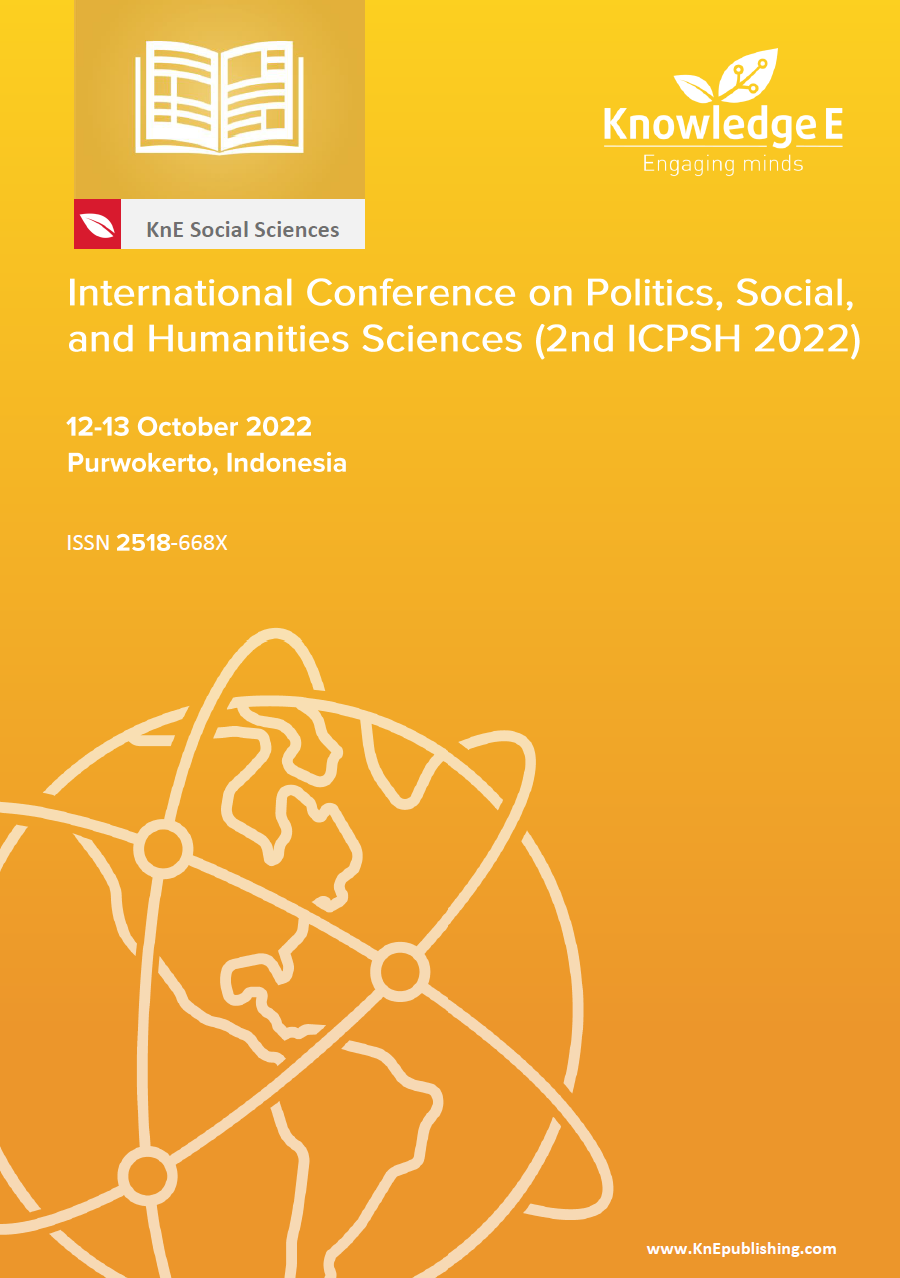Strengthening Government and Community Institutions in Disaster Communication in Kesugihan Sub-District, Cilacap District: Lessons from the COVID-19 Pandemic
DOI:
https://doi.org/10.18502/kss.v8i3.12826Abstract
The COVID-19 pandemic in Indonesia has entered its third year and seems to be nearing its end. The COVID-19 disaster provides many life lessons for society, nation, and state. One of the takeaways from the COVID-19 disaster is improving how humans communicate during a disaster. This paper is part of the research results during the response and recovery phases of the COVID-19 pandemic in the Kesugihan sub-district. This study interviewed leaders of government institutions and FGDs with community leaders in the Kesugihan sub-district, comprising 32 informants. The most important finding in the research is the importance of social capital in fostering solidarity so that cooperation is established between government agencies and community institutions in dealing with disasters and eliminating obstacles.
Keywords: communication, disaster, community, government, COVID-19
References
Ridho M. Penyebab Kasus Positif COVID-19 Cilacap Melonjak 100 Persen. Liputan6.com. 2020.
Monin JK, Ali T, Syed S, Piechota A, Lepore M, Mourgues C, et al. Family Communication in Long-Term Care During a Pandemic: Lessons for Enhancing Emotional Experiences. Am J Geriatr Psychiatry. 2020 Dec;28(12):1299–307.
Merkaš M, Perić K, Žulec A. Parent Distraction with Technology and Child Social Competence during the COVID-19 Pandemic: The Role of Parental Emotional Stability. J Fam Commun. 2021;21(3):186–204.
Ridho A. Kritik dan Distorsi Komunikasi Pemerintah di Masa Pandemi COVID-19, Bagaimana Seharusnya?. Jurnal Dakwah dan Komunikasi Orasi. 2022;13(1):134–46.
Sukandar R, Nurhajati L, Oktaviani RC, Wijayanto XA. Komunikasi Publik Pemerintah Republik Indonesia terkait Pandemi COVID-19 di Indonesia. PERSPEKTIF. 2022 Apr;11(2):771–778.
Nurdin R. Komunikasi dalam Penanggulangan Bencana. Jurnal Simbolika. 2015 Apr;1(1):51–61.
Saleh A, Mujahiddin M. Challenges and Opportunities for Community Empowerment Practices in Indonesia during the COVID-19 Pandemic through Strengthening the Role of Higher Education. Budapest International Research and Critics Institute (BIRCI-Journal): Humanities and Social Sciences. 2020 May 8;3(2):1105–13.
Kumalawati R, Murliawan KH, Yuliarti A. Nasruddin, Nugroho AR. Public Communication for COVID-19 Disaster Mitigation. In: Urbanski M, Rajiani I, Arisanty D, editors. Proceedings of the 2nd International Conference on Social Sciences Education (ICSSE 2020). Banjarmasin: Atlantis Press; 2021.
Kholil K, Setyawan A, Ariani N, Ramli S. Disaster Communication in 4.0 Era: Review of Earthquake Disaster Mitigation in Lombok West Nusa Tenggara. Asian Journal of Environment & Ecology. 2019 Nov;11(1):1–9.
Tanesab JP. Institutional Effectiveness and Public Inclusions: A Case Study of Indonesia’s Disaster Mitigation Agency. International Journal of Disaster Management. 2020 Dec;3(2):1–15.
Sugiyono. Metode Penelitian Kualitatif. Bandung: Alfabeta; 2013.
Gunawan I. Metode Penelitian Kualitatif: Teori dan Praktik. Jakarta: PT. Bumi Aksara; 2014.
Haddow GD, Haddow KS. Disaster Communications in A Changing Media World. Massachusetts: Butterworth-Heinemann (Elsevier); 2009. xviii–xix.
Mohamed NA, Solehan HM, Mohd Rani MD, Ithnin M, Isahak CIC. Knowledge, Acceptance and Perception on COVID-19 Vaccine among Malaysians: A Web-Based Survey. PLoS One. 2021 Aug 1;16(8 August).
Satispi E, DyasTuti RW, Fathani AT, Kaewhanam P. DyasTuti RW, Fathani AT, Kaewhanam P. Local Government Respond to COVID-19 Pandemics: A Study of South Tangerang City. Journal of Governance and Public Policy. 2021 Jun;8(2):82– 92.
Coleman JS. Foundations of Social Theory. Massachusetts: Harvard University Press; 1994. 300–321 p.
Cofré-Bravo G, Klerkx L, Engler A. Combinations of bonding, bridging, and linking social capital for farm innovation: how farmers configure different support networks. J Rural Stud. 2019 Jul;69:53–64.
Daisy Fraustino J. National Consortium for the Study of Terrorism and Responses to Terrorism Social Media Use during Disasters A Review of the Knowledge Base and Gaps [Internet]. 2012. Available from: www.start.umd.edu
Adhani A, Anshori A, Mahardika A. Public Attitudes towards the Government’s Policy Communication in Preventing COVID-19. Jurnal ASPIKOM. 2022 Jan;7(1):61–70.
Widyawati. Pedoman Komunikasi Risiko untuk Penanggulangan Krisis Kesehatan. Kartinah E, editor. Jakarta: Kementerian Kesehatan RI; 2021. 14–16 p.
Barata GK, Lestari P, Hendariningrum R. Model Komunikasi untuk Penanggulangan Bencana Gunung Merapi melalui Aplikasi Plewengan. Journal Communication Spectrum. 2018 Aug;7(2):131–45.
Ledogar RJ, Fleming J. Social Capital and Resilience: A Review of Concepts and Selected Literature Relevant to Aboriginal Youth Resilience Research. Pimatziwin. 2008;6(2):25–46.

